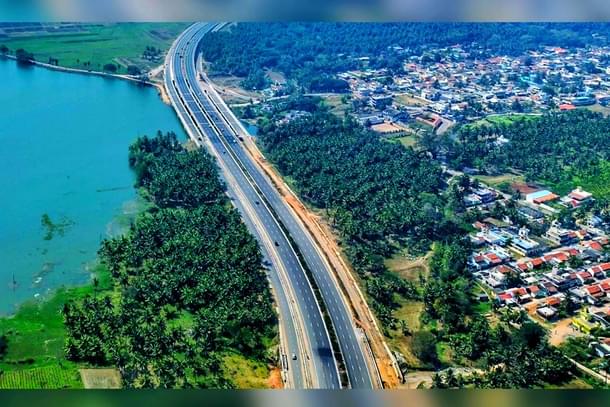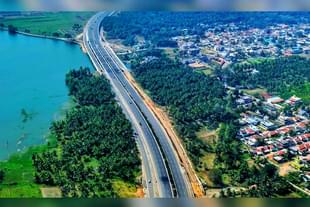Infrastructure
Bengaluru To Adopt Hyderabad Inspired Land Pooling Model For Peripheral Ring Road Project
V Bhagya Subhashini
Jun 19, 2024, 04:38 PM | Updated 04:36 PM IST
Save & read from anywhere!
Bookmark stories for easy access on any device or the Swarajya app.


Bengaluru is set to take a cue from Hyderabad in constructing the long-delayed 74-kilometre Peripheral Ring Road (PRR) project, which has been stalled for the past two decades.
Karnataka Deputy Chief Minister D K Shivakumar announced that the state government has decided to adopt a land-pooling model, similar to the one used in Hyderabad, where 40 per cent of the land will be returned to the original landowners. This move hints at the possibility of the Bangalore Development Authority (BDA) notifying more properties for acquisition in the future.
"We are not pledging the BBMP properties, but there is a plan to acquire properties for the Peripheral Ring Road project under the 60:40 ratio," stated Shivakumar.
Initially, the government intended to build the 90-metre wide ring road around the city by providing cash compensation to the farmers. The BDA had estimated the land acquisition cost at approximately Rs 21,000 crore, with construction costs projected to be around Rs 7,000 crore.
Shivakumar expressed dissatisfaction with this proposal, pointing out that while the BDA returns 40 per cent of developed land to farmers or landowners in layouts like Dr Shivaram Karanth Layout and Kempegowda Layout, the compensation structure for the PRR project was significantly different, reports Deccan Herald.
By adopting this approach, the government aims to ensure that the local residents benefit from the infrastructure development, fostering a sense of shared progress and cooperation among stakeholders.
Bengaluru Peripheral Ring Road
The PRR, designed to encircle the city's peripheries, aims to alleviate traffic congestion and improve connectivity in the region. The PRR will traverse through 10 major junctions and over 100 minor intersections, strategically placing 16 flyovers at key locations such as Hesarghatta Road, Old Madras Road, Whitefield Road, Channasandra Road, and Hosur Road, among others.
This ambitious project is set to feature 16 flyovers, 10 overpasses, and 12 underpasses, enhancing the city's transportation network. Additionally, the plan includes bridges over seven water bodies, including prominent ones like Chikkatogur Lake, Gunjur Lake, and Jarakabande Lake, further facilitating seamless connectivity.
To tackle traffic intricacies, the project incorporates six cloverleaf-type over bridges, providing a solution for efficient crisscrossing without congestion.
Designs made public by the BDA showcase a 100-m-wide greenfield expressway, featuring green spaces, utilities, underground cables, footpaths, cycle tracks, and drains.
The main carriageway, boasting eight lanes, will be flanked by service roads on both sides, with a broad median reserved for potential future integration with the metro project.
The project covers a length of 65.95 km between Hosur Road and Tumakuru Road, with an additional 3.4 km near Madanayakanahalli and 4.08 km near Hebbagodi to link existing roads seamlessly into the PRR network.
V Bhagya Subhashini is a staff writer at Swarajya. She tracks infrastructure developments.





